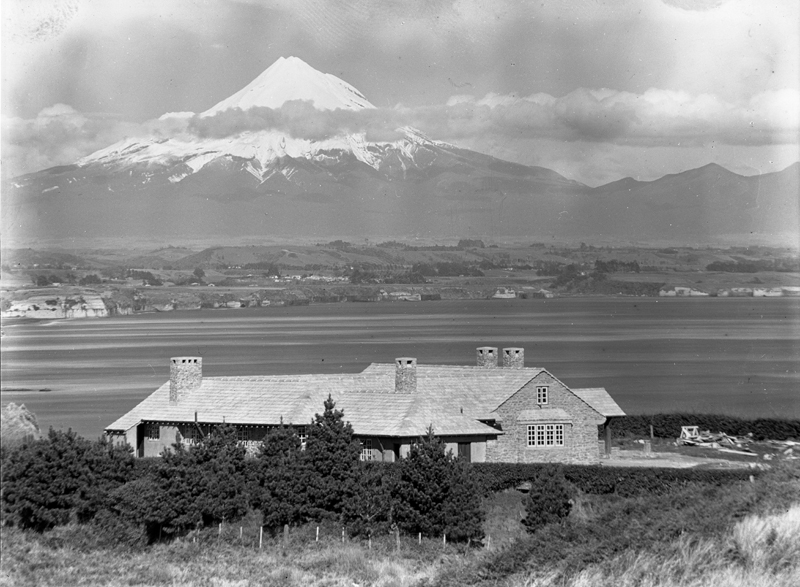
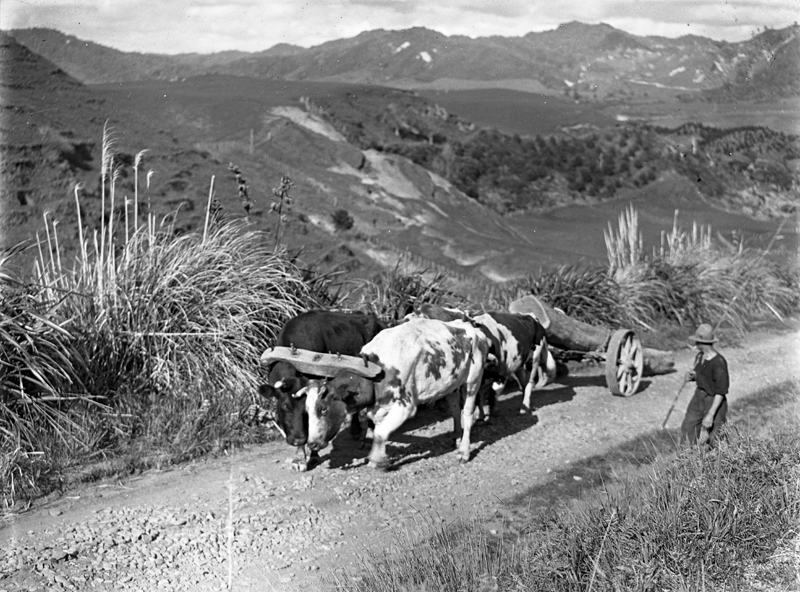
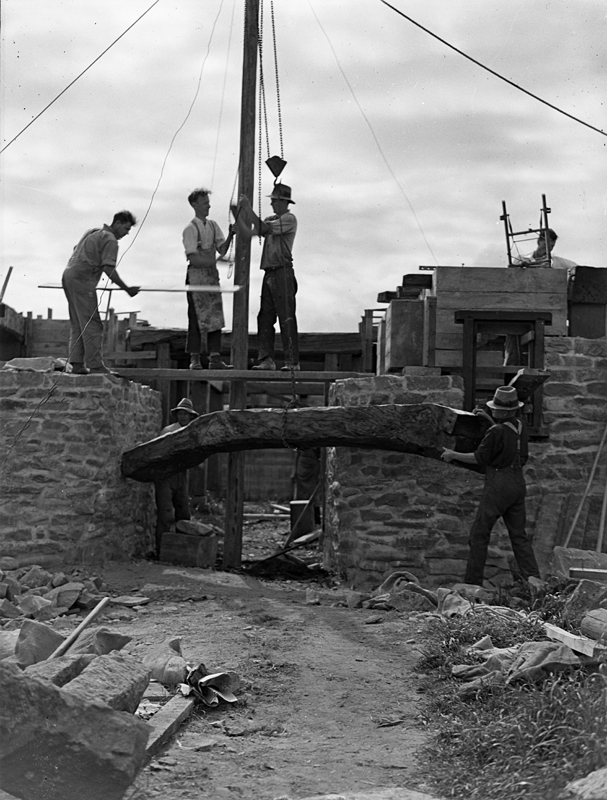
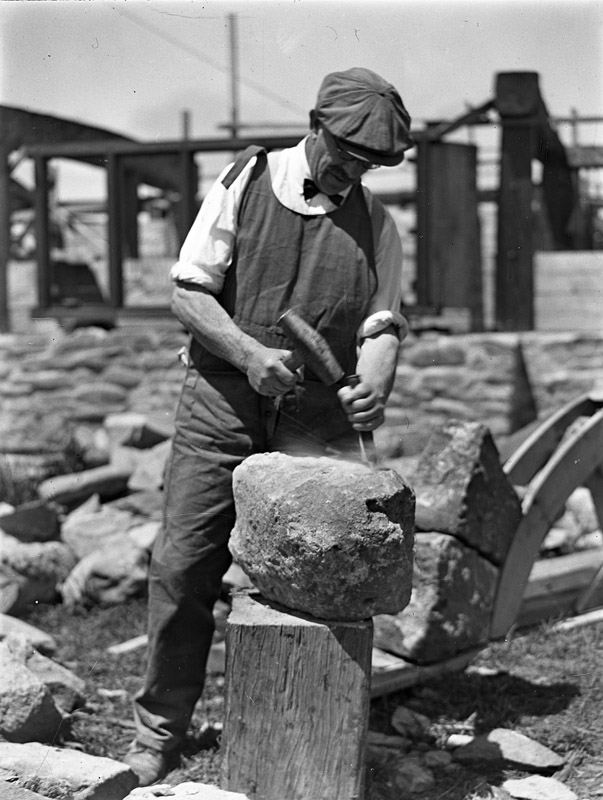
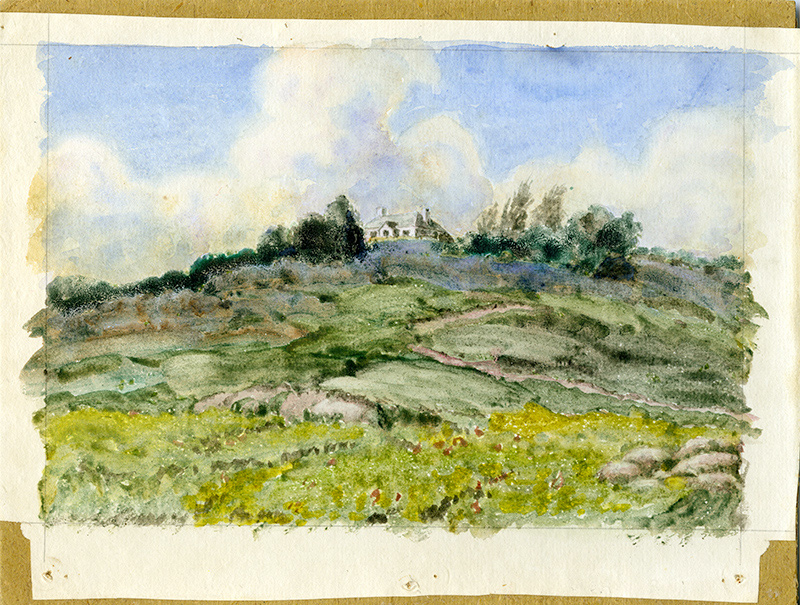
Dramatically sited on a cliff top high above the black sands of Wai-iti beach, Wilkinson's Castle is claimed to be James Chapman-Taylor's architectural masterpiece. The north Taranaki home was built for Eltham MP Charles Anderson Wilkinson and his family as a weekend and holiday retreat.
Built close to the ancient Whakarewa pā in 1928, the castle once commanded views along the west coast and across the waves to snow-capped Mount Taranaki. Today the view is hidden behind mighty macrocarpa trees and native bush, but the setting is no less awe-inspiring. Below the castle white capped waves crash against the papa cliff. In the garden above the sea the sound of the roaring waves is muted as it mingles with the birdsong of tūī playing in the surrounding trees.
Despite its name this isn't an actual castle - there are no turrets or moats - though with its 60 centimetre-thick concrete walls it looks as sturdy as one. When Arts and Crafts architect Chapman-Taylor was commissioned to design and build a private hideaway for Wilkinson he set out with plans to make a quality home “…built of materials that nature uses, so that it blends in with the hill and sky and grows harmoniously out of the earth.”
To help achieve this, the former Taranaki man moved his entire family to Wai-iti, living in a barn for 18 months while the building took place. This enabled him to get a feel for the site and how to best position the new home.
In keeping with his ideal, the castle was built almost entirely out of local materials, constructed on-site. Chapman-Taylor called in local craftsmen, a blacksmith and carpenters from Urenui, stonemasons from Onaero and labourers from the surrounding area. The project provided much-needed work in a depression-hit New Zealand.
The castle's sturdy concrete walls are faced with weatherworn sandstone quarried from the beach below, hauled up the winding track by a team of bullocks, to be cut into shape by stonemasons. Rātā and pūriri timber was sawn from the surrounding bush and hand adzed. The huge rātā beam which dominates the entrance was chopped out of a whole tree.
Even the specially designed door hinges were made in an on-site forge. The roof (reputedly weighing in at 90 tonne) was made of two-centimetre thick concrete tiles, moulded on site and coloured with sulphate of iron (nature's own colouring) to varying depths of colour, from pale biscuit to burnt sienna, earthy warm colours that bind the castle to the soil below.
Walk in through the heavy handcrafted timber doors of Wilkinson's castle and the soul of the house envelopes you like a warm blanket. This is as it was meant to be, Chapman-Taylor believed a house had a soul as well as a body. The doors lead into a peaceful inner garden courtyard where hanging baskets and potted plants frame a square of lawn.
Throughout the house the quality craftsmanship is on display - there is no escaping it - from the adzing of the overhead beams through to the hand-forged hinges on the hand-crafted furniture. All of it a little hand-wrought sermon from Chapman-Taylor on contemporary morality.
The architect was convinced that a house - the environment in which people lived and children grew up in - was a primary factor in shaping the moral conduct of society. Wilkinson's Castle is designed to make you think, to contemplate the effort gone into making the house and the beauty of the materials and design.
Around the courtyard, cloisters lead off to rooms proportioned according to their function. Intimate cosy bedrooms with built in furniture, a large living room featuring an enormous fire place with inglenooks and cushioned settees to encourage family closeness and interaction. The windows are small - so the viewer has to take in the outside scene piece by piece, appreciating the window's craftsmanship at the same time.
Every room has handcrafted purpose-built furniture - a wardrobe in the boys' bedroom, dresser and mirror in the girls', table and stools in the tiled kitchen. Where products could not be made on site quality goods were imported - the colourful tiles in the pantry and bathroom were bought in Italy.
At a cost of £22 per square foot of floor space, building the house was not cheap. But as Chapman-Taylor wrote in a scrapbook covering the home's construction: “…considering that everything was designed and made from the best materials obtainable, that even the roof framing was hard wood and that quite a lot of the furniture was included in the price besides a water supply and a track - the price was a triumph”.
Never one for false modesty Chapman-Taylor goes on to pat himself on the back for a job well done. “Looking at the house as it now stands, spreading and massive and grey as it stands on the top of the hill it takes its place in the landscape quite naturally. It looks as if it had always been there and always will be there as a matter of course. It belongs!”
The scrapbook, a large, leather bound tome containing photos and the architect's remarks on the buildings progress, sits on top of an old piano in the lounge for current-day visitors to read. The castle is still used as a holiday home, it was sold by the Wilkinson family in 1989.
Wilkinson's Castle is not the only Chapman-Taylor designed buildings in Taranaki - Plas Mawr and Tūpare in New Plymouth and a home in Inglewood all share the same link, a little of the architect's soul.
Puke Ariki Heritage Collection: James Chapman Taylor
LinkPlease do not reproduce these images without permission from Puke Ariki.
Contact us for more information or you can order images online here.